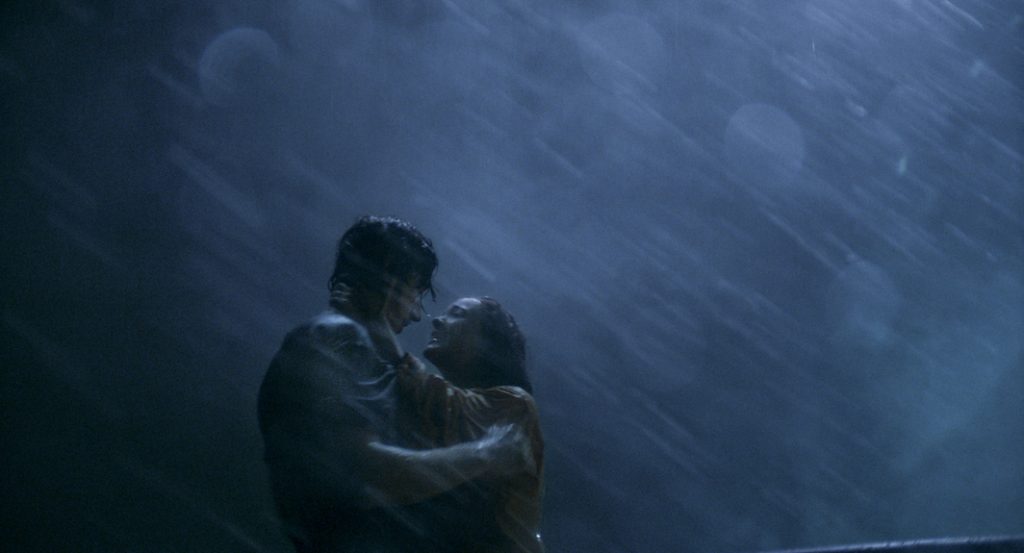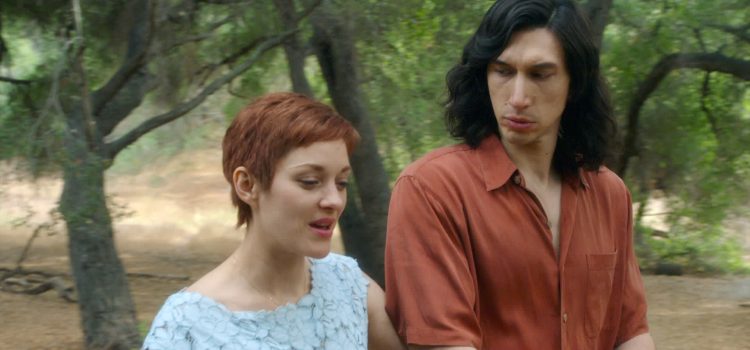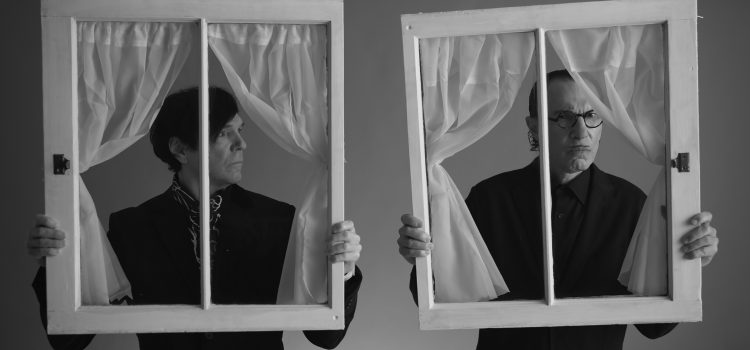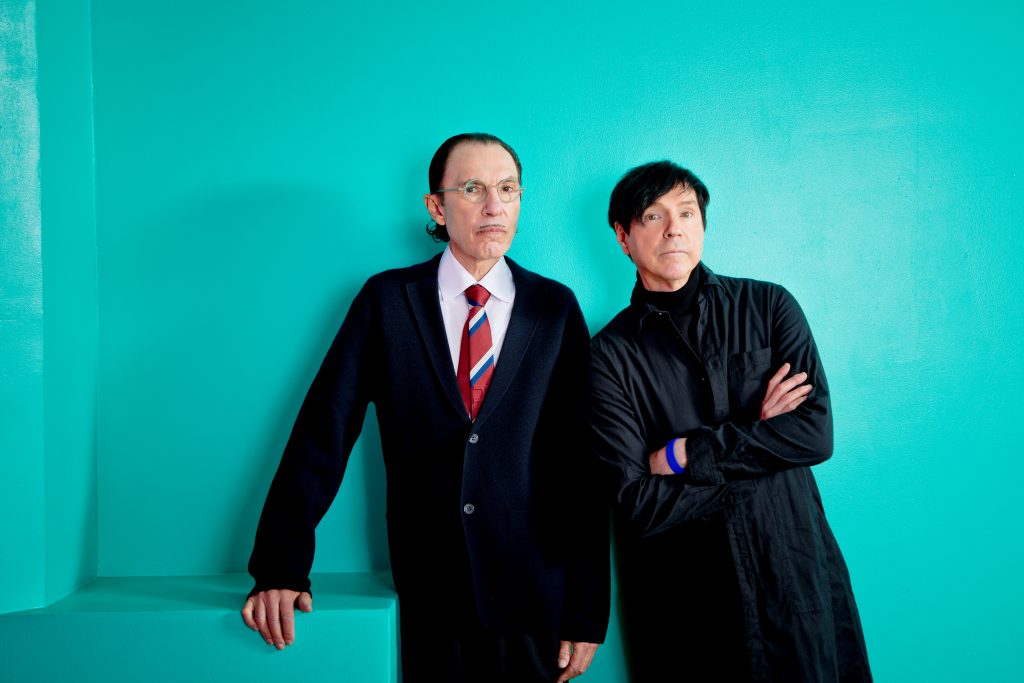By Lynn Venhaus
My first thought was “What did I just see?” Then, “How am I going to put this into words?”
In present-day Los Angeles, Henry (Adam Driver) is a comedian/performance artist with a shock act who is in love with his opposite, Ann (Marion Cotillard), a beloved and beautiful opera singer. Always in the spotlight, their passion is lived out loud. They have a child together, Annette, a prodigy who can sing like her mother and becomes famous too.
Over time, I predict that “Annette” will gain a cult following and be debated in cinematic circles. For now, this unconventional film is a strange experience, haunting and disturbing –yet there is a willingness to applaud the artists’ ambition at work here.
People involved in this production have renowned reputations for beating to their own drummers. Visionary director Leos Carax, responsible for the strangest film I have ever seen, “Holy Motors” in 2012, an indescribable mix with nods to David Lynch and Guillermo del Toro, took the reins here. He recently won Best Director for “Annette” at the Cannes Film Festival.
Both his films have a trippy hallucinatory quality, although “Holy Motors” is more of a fever dream while “Annette” is akin to a nightmare.
The melodramatic story about love, passion and fame is from the idiosyncratic Sparks Brothers, aka Ron and Russell Mael, two of the most original musicians still at work 50 years later. They never want to repeat themselves, and as film students years ago, they have had a desire to make a film for years.
In the recent documentary about them, their fondness for the French New Wave of the late 1950s is mentioned and how it has influenced their work, which you can see here. For this film, they wrote the music and Russell wrote the screenplay.
This collaboration between eccentric artists would seem to mesh, but this appears disjointed in a brash, intended style and is too bizarre to embrace. It has the vibe of an experimental film, theater of the absurd and a pop opera concept album. Don’t seek answers to your questions because whatever you find mysterious will stay that way.
“Annette” begins with the cast and crew singing the earworm “So May We Start,” with Russell leading and Ron on keyboard, as the cast and crew morph into their duties by the number’s end on the streets of L.A. – Driver and Cotillard turn into Henry and Ann, the star-crossed lovers central to this grand operatic spectacle. This song’s a foreshadowing of the fine line between reality and fiction that the movie addresses with its alternative reality, hyper-reality appearance.
And off we go into a dark abyss. Suffice it to say it will be one wild ride, one you won’t soon forget.
As the famous couple, Driver’s and Cotillard’s characters in the public eye and the paparazzi are obsessed with them.
They are dubbed “Beauty and the Bastard.” Henry McHenry’s act is as an angry, aggressive, defiant man who antagonizes his audience, with back-up singers on stage. She is a world-renowned soprano, revered for her voice and ethereal beauty.
Henry’s self-destructive obsession, jealousy, resentment and massive ego are harmful to their relationship, especially when his career starts spiraling downward. His hostility eventually turns off his audiences. Ann, however, is a celebrity darling. Their lives are a crazy cyclone, comparable to the familiar “A Star Is Born” plot, which you know won’t end happily ever after.
They have a daughter, Annette, who is physically manifested by doll puppets. She will become a singing sensation with something to say. The wooden marionette is creepy.
Simon Helberg, who starred on TV’s “The Big Bang Theory” for 12 seasons and played the delusional singer’s accompanist in “Florence Foster Jenkins,” is a character only called The Conductor. He and Ann had a brief relationship before Henry, and he still carries the torch. He gives a passionate performance, demonstrating he has more range than we’ve seen before.
This world becomes more surrealistic, with blurred lines. But it does have hypnotic visuals.
While Driver has the showier, more ferocious role, he and Cotillard are both mesmerizing performers. She won an Oscar as Edith Piaf in “La Vie En Rose,” and has played a variety of emotionally complex roles since 2008. Her authenticity and earnestness inhabit every character. What’s so appealing in Ann is lightyears from Driver’s dour character.
It’s such a treat to see Cotillard on screen that it’s disappointing she hasn’t more to do.
Driver immerses himself so completely in every role that you can’t pin down his work, but his emotional honesty has always resonated. As the career-focused director in “A Marriage Story,” and as the commitment-phobe Adam in HBO’s “Girls,” he has not been afraid to be unsympathetic and venture into the negatives. Dude, he killed his father in “Star Wars: The Force Awakens”! (Spoiler alert for a 6-year-old movie).
Next to Kylo Ren, this is the deepest dive into darkness yet. He tears it up as a mad man, an unchecked out-of-control bad boy. There seems to have been potential for a more interesting film that could have been developed about such a guy.
But the actors can only take a film so far if the material is thin and not fully developed, at least in a typical narrative way.
And there’s no way the gloom and doom can be lightened. Do not expect a traditional musical format – there are no optimistic song-and-dance numbers comparable to “Another Day of Sun” in “La La Land” or “Life’s a Happy Song” in “The Muppets.” Think of the major tragic operas, conjuring up as much pain and suffering as possible through big arias.
The film is certain to bring up the age-old conundrum – What is art? What does it all mean? And does it mean anything’?
We can understand, however, its take on bleak romance and drawbacks on fame as it rages about toxic masculinity. You don’t need a degree in Fellini to figure these things out.
However, the sung dialogue and repetitive songs are not strong enough to make us care more or enhance the plot, like “La La Land” did with its focus on two career trajectories.
“Annette” is a confounding, confusing, peculiar work that will be one of the most polarizing of the year. It is a difficult story to pin down, and perhaps on repeated viewings, more meaning can be unlocked – or not.
“Annette” is a 2021 musical directed by Leos Carax and starring Adam Driver, Marion Cotillard and Simon Helberg. It is Rated R for sexual content including some nudity, and for language and the runtime is 2 hours and 20 minutes. The movie is in theaters on Aug. 6 and streaming on Amazon Prime beginning Aug. 20. Lynn’s Grade: C.


Lynn (Zipfel) Venhaus has had a continuous byline in St. Louis metro region publications since 1978. She writes features and news for Belleville News-Democrat and contributes to St. Louis magazine and other publications.
She is a Rotten Tomatoes-approved film critic, currently reviews films for Webster-Kirkwood Times and KTRS Radio, covers entertainment for PopLifeSTL.com and co-hosts podcast PopLifeSTL.com…Presents.
She is a member of Critics Choice Association, where she serves on the women’s and marketing committees; Alliance of Women Film Journalists; and on the board of the St. Louis Film Critics Association. She is a founding and board member of the St. Louis Theater Circle.
She is retired from teaching journalism/media as an adjunct college instructor.



